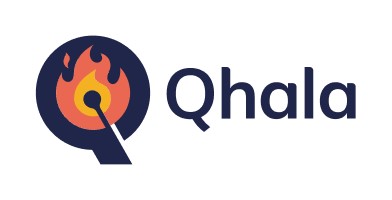Formal marketplaces and social media platforms create new ways for farmers to search and discover new markets. Most agricultural commodities are sold through cooperatives, by middlemen at local markets, or via aggregators. In our exploration of platform livelihoods in Kenya, we spoke to farmers who are turning to digital platforms to sell at competitive prices and connect with clients.
Some turned to farming due to unemployment or underemployment and to support their family’s agribusiness. Some, however, venture into farming to build digital platforms that facilitate market linkages. Farmers are now using online platforms to sell their produce. This happens in two ways:
- Formal marketplaces through multi-sided marketplaces built to connect farmers to markets.
- “Social agriculture,” the practice of using social media to sell agricultural commodities.
Thriving in this sector requires more than just land, farming skills, and work. Farmers now need an aggressive and creative digital strategy for trading, selling, and marketing; timing is particularly important for perishable produce. In the language of the four elements of platform livelihoods, to be a farmer on a platform depends on savvy trading, perhaps with some digital creating mixed in. Farming is a far cry from gig work, but it can be a platform livelihood all the same.

"You are your own boss when it comes to farming. You get the returns and the profits more than what you would have gotten in the offices or in those white collar jobs you so desire. So I have seen it change my life, it’s changing many people’s lives. Yes and it's growing the economy. You are creating employment."
Experience selling on formal marketplaces
Formal platforms expose farmers to a wider market. However, in this sector there are few platforms that link farmers directly to clients. Some examples used by farmers we interviewed are Ecosokoni, Mkulima Young, and Farmers Market. Since most of these formal marketplace platforms are not widely known, farmers report slow sales through them and may look for other avenues to connect to markets. Other platforms in the farming sector offer access to farm inputs, financing, and farming content (e.g., Twiga, Digifarm). The majority of the farmers interviewed used social media rather than dedicated marketplace platforms.
“I also tried this application Mkulima Young where you post your product, and you wait, but the problem with Mkulima Young, not many people know about it. If you post there, there are a few people who'll see. You know mostly people who you contact daily are easily people who are on your WhatsApp so when I post on my WhatsApp, I get customers who are ready to buy—who'll access my product directly.”

Experience selling in Social Agriculture
Farmers use social media not only for selling, but also to showcase the farming process as a way to engage their audience. Different social platforms offer different advantages for farmers depending on the target demographic and what the platform is best suited for. Facebook and WhatsApp are the most commonly used platforms, while Instagram is the least used. Some farmers use multiple farmer groups on Facebook or WhatsApp, while others use their personal accounts to create awareness. For most farmers, social media strategy entails posting frequently and amassing followers by sharing their farming process to build credibility with clients.

“Without a doubt, were it not for social media, I would be lacking now the market. I shouldn’t have a market for my product, because 90% of the consumers of my products are online actually.”
So what does this mean for the farmer? What would help them grow and thrive in this sector?

1. Developing critical digital marketing skills as they become more necessary
Farmers need more than agricultural knowledge to succeed. Entrants need to figure out many variables: where, how, what, and when to farm, weather patterns, soil types, and which seeds to plant. Only after harvest do they figure out where to market.
Due to the perishability of produce, farmers have to learn the dynamics of the market to succeed, usually using rapid and aggressive online marketing to make sales. Education plays a key role in digital knowledge, awareness, and marketing. The more skilled farmers are in these areas, the better their chances of building a sustainable business.
“I farm in Nyeri, but sometimes because our farm cannot meet the supply, I buy from other farmers and resell. Right now, I cannot be at the farm because I have already established my business. I have specialised in marketing and selling the product, people farm and I sell.”

2. Farmers still depend on offline markets
Online platforms connect farmers to markets, but they still depend on offline markets for pricing, understanding evolving client needs, finding business-to-business (B2B) markets, bidding, tapping into niche markets, and showcasing product.

“Without a doubt, were it not for social media, I would be lacking now the market. I shouldn’t have a market for my product, because 90% of the consumers of my products are online actually.”
3. Young farmers are rewriting the narrative of farming
Young farmers are using digital platforms to encourage more youth to join the sector. They use digital technology as an evangelist platform to change the stereotype of farming, viewed as only for older or rural people. They also showcase the farming process so that more people understand the rigorous process and appreciate the work rather than bargain for lower prices.
“So I have some clients who tell me, you're still young you can be doing a white collar job in the office and I’m like—and things like that, you see? If people could visualize agriculture could be a bigger thing and it’s not like it’s so poor, that is why you have opted for agriculture. Like it’s not poverty or an education thing. It’s like—you can be so passionate about it like I am. We are young people, you see, our lines of business are mostly for old people, so they don’t believe in you.”

4. The farming sector does have barriers for inclusivity
Most of the farmers we interviewed are young, digitally savvy, and highly skilled with tertiary education. They are likely early adopters of utilizing digital channels to reach clients in the farming sector. Women farmers described how digital channels can level the playing field, an aspect they appreciated. Some mentioned implied sexism, especially in offline markets, leading to a preference for online channels.
Most farms are situated outside urban areas due to the availability of vast and arable land, but markets are largely in towns and cities, where farmers can find more clients and sell for better prices.

“[There’s] a little bit of male chauvinism around. I won’t lie. There is a lot of sexism that is around. But there is also the advantage of the fact that you are a woman that people will easily believe you or trust in you.”
Conclusion
The farmers here are likely still the exception, not the rule, in Kenya. They are relatively early adopters of these digital practices, and as such are perhaps better educated, more connected, slightly more urban, and slightly more tolerant of risk-taking than other farmers might be. But they are also pioneers, illustrating ways in which platform livelihoods are a possibility for the farming sector.
We found farmers engaged with platforms in several settings:
- Some live in urban areas with their farms situated in rural areas. They serve urban areas because that is where their market is.
- Semi-urban farmers live and work in semi-urban areas and look for markets in urban towns.
- Rural farmers, most likely educated in urban areas, return to their rural homes after graduation to manage the farm.
The elements of platform livelihoods demonstrate that participation in digital markets and spaces is more than simply a transaction. It is a set of practices: social, learning, and transactional. Digital platforms can involve frustrations and a fair amount of hustle, but also agency, flexibility, and the promise of better earnings for farmers.
Explore the report results on other sectors
The arts and creative industries: Digital channels as a source of inspiration, distribution, and a platform to educate audiences on the value of art.
Asset renting: People can earn a living by renting out assets they own (like property, tractors, or specialized equipment) or by renting them then re-renting them out in smaller fractions.
Delivery and logistics: Fast-paced work, driven by algorithms. Structured weekly earnings, support in bookkeeping, budgeting, and saving.
E-commerce and social commerce: Experiences with platform sales via formal marketplaces, social commerce, paid and free online advertising.
Freelancing and microwork: To connect with clients all over the world for everything from data processing to graphic design and writing, freelancers must build a personal brand while microworkers mostly remain anonymous.
Ride-hailing: In big cities and smaller towns, ride-hailing is a mix of working and asset renting, as the driver and their vehicle are intertwined.
Trades and services: Domestic and care work, trades for custom-made products, and a myriad of other services, delivered on demand and matched by marketplaces and social media.
Cross-cutting themes: Reflections on cross-cutting themes around rurality, gender, inclusion for people with disabilities, and fractional work.
This platform livelihoods research was conducted by Qhala in collaboration with Caribou Digital and in partnership with the Mastercard Foundation.




